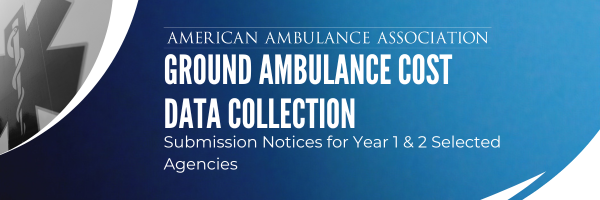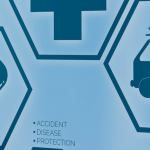Member Advisory: CMS Issues CY 2023 Final Ambulance Fee Schedule Rule Updated Data Ground Ambulance Data Collection System
by Kathy Lester, JD, MPH
CMS has released the “CY 2023 Payment Policies under the Physician Fee Schedule and Other Changes to Part B Payment Policies; Medicare Shared Savings Program Requirements; Medicare and Medicaid Provider Enrollment Policies, Including for Skilled Nursing Facilities; Conditions of Payment for Suppliers of Durable Medicaid Equipment, Prosthetics, Orthotics, and Supplies (DMEPOS); and Implementing Requirements for Manufacturers of Certain Single-dose Container or Single-use Package Drugs to Provide Refunds with Respect to Discarded Amounts” (Final Rule). The Final Rule includes proposals affecting ground ambulance services in terms of medical necessity requirements and documentation requirements, as well as to the ground ambulance cost collecting tool.
I. Medical Necessity and Documentation Requirements for Nonemergency, Scheduled, Repetitive Ambulance Services
CMS finalizes the modifications to the documentation requirements codified in regulation pertaining to the medical necessity and documentation requirements for nonemergency, scheduled, repetitive ambulance services, such as those to/from dialysis facilities. The Final Rule clarifies that the Physician Certification Statement (PCS), and additional documentation from the beneficiary’s medical record, may be used to support a claim that transportation by ground ambulance is medically necessary. It also notes that the PCS and additional documentation must provide detailed explanations that: (1) are consistent with the beneficiary’s current medical condition; and (2) explain the beneficiary’s need for transport by an ambulance. Coverage includes observation or other services rendered by qualified ambulance personnel. It maintains the following requirements:
- In all cases, the provider or supplier must keep appropriate documentation on file and, upon request, present it to CMS;
- The ambulance service must meet all program coverage criteria including vehicle and staffing requirements; and
- A signed PCS does not alone demonstrate that transportation by ground ambulance was medically necessary.
CMS declines to “confine this regulatory clarification to the RSNAT prior authorization program, as there may be non-emergent, scheduled, repetitive ambulance transport services outside of that program that would be affected.” (Display Copy 1756) CMS also does not provide further clarification about what it means by the term “additional documentation” because it believes that “the data elements needed will vary depending upon the beneficiary’s specific conditions and needs.” (Id.) CMS also states that “[t]his proposal does not establish new obligations for documentation; rather, it merely clarifies existing requirements.” (Id. at 1757). In response to a comment, CMS also writes, “In addition, our pre-proposal language and proposed regulatory language both reflect that the presence of a PCS alone is not sufficient to demonstrate medical necessity, and, therefore, must be supported by medical documentation.” (Id.) CMS also declined to extend authorization to nurse practitioners and physicians’ assistants, stating that to do so would be outside of the scope of the rule.
II. Ground Ambulance Data Collection Instrument
CMS finalizes the proposed changes to the ground ambulance data collection instrument and instructions with a few additional modifications in response to comments. They fall within four areas: (1) editorial changes for clarity and consistency; (2) updates to reflect the web-based system; (3) clarifications responding to feedback from questions from interested parties and testing; and (4) typos and technical corrections. The updated instrument that includes all of the CY 2023 proposed changes to review and provide comments on is posted on the CMS website at https://www.cms.gov/Medicare/Medicare-Fee-for-Service-Payment/AmbulanceFeeSchedule/Downloads/Medicare-Ground-Ambulance-Data-Collection-System-Instrument.pdf.
One of these modification is to Section 5, Question 3c, which now reads: Does your organization respond to calls with another non- transporting agency such as a local fire department that is not part of your organization? After the question, the following instructions will be provided: This includes joint responses with other ground ambulance organizations as well as cases where a fire, police, or other public safety department responses to calls for service with your organization. Only consider cases where your ground ambulance does or would have transported the patient, if necessary.
The Final Rule notes that the system already includes an “autosave” feature that saves responses as they are entered. The system also allows the same user to enter information at different times, and/or multiple users to enter information at different times. The system also already includes many validation and error checking steps that are automatically applied as respondents enter information. CMS also noted that it has no plans to adopt additional import functionality prior to the launch of the system, but that it will continue to explore the option of an API. CMS also indicates that the final written tool and web-based platform will align before the system goes live. A print function will also be available for the online submissions.
CMS indicates that the data from the collection system will be made available to the public through posting on the CMS website at least every 2 years. Summary results will be posted by the last quarter. The data collected under the ground ambulance data collection system will be publicly available beginning in 2024.
CMS also indicates that it will not require a ground ambulance organization to fill the data entry submitter and data certifier roles with different individuals.
CMS has also provided additional guidance, including FAQs available at: https://www.cms.gov/Medicare/Medicare-Fee-for-Service- Payment/AmbulanceFeeSchedule/Downloads/Medicare-Ground-Ambulance-FAQs.pdf.
CMS also finalizes its proposal for an automated process for submitting a hardship exemption request and informal review request.
III. Origin and Destination Requirements Under the Ambulance Fee Schedule
In the Final Rule, CMS also responds to comments it received on the Interim Final Rule that expanded the origin and destination requirements. It finalizes the interim final policy that the expanded list of covered destinations for ground ambulance transports including, but are not limited to, any location that is an alternative site determined to be part of a hospital, CAH or SNF, community mental health centers, FQHCs, RHCs, physician offices, urgent care facilities, ASCs, any location furnishing dialysis services outside of an ESRD facility when an ESRD facility is not available, and the beneficiary’s home. The policy will be In effect for the duration of the PHE for the COVID-19 only.












